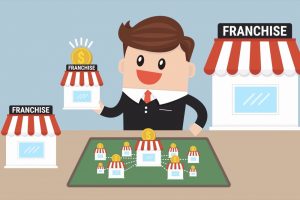Franchise Average Profits, Expenses, Number of Employees, Employee Cost, and Average Revenue
The best approach for using this information is to consider it a general guideline, this is subject to change by restaurant brand, location, expertise of the owner, and the overall economy. Franchise organizations often do not publicly disclose such detailed financial and operational data. However, here are rough estimates for some types of franchises that will be helpful in determining what type of franchise you want to own and developing your business plan.
- Quick Service Restaurants (QSRs)
- Average Initial Franchise Fee: $20,000 – $45,000
- Average Initial Investment: $100,000 – $1.2 million
- Average Number of Employees: 10 – 50
- Average Employee Cost: $20,000 – $30,000 annually per full-time employee
- Average Revenue: Highly variable but can range from $500,000 to over $2.5 million per year per location
- Profit: Can vary widely, with some reporting net profit margins between 6% and 9%.
- Full-Service Restaurants
- Average Initial Franchise Fee: $25,000 – $50,000
- Average Initial Investment: $200,000 – $3 million
- Average Number of Employees: 20 – 100
- Average Employee Cost: $20,000 – $30,000 annually per full-time employee
- Average Revenue: Varies widely but can range from $1 million to over $2.5 million per year per location
- Profit: Net profit margins can range from 3% to 6%, but can vary widely.
- Fitness Centers
- Average Initial Franchise Fee: $15,000 – $35,000
- Average Initial Investment: $50,000 – $300,000
- Average Number of Employees: 5 – 20
- Average Employee Cost: $25,000 – $35,000 annually per full-time employee
- Average Revenue: Varies widely, often between $200,000 to over $1 million per year per location
- Profit: Some franchisors report average net profit margins between 10% and 15%.
- Health and Wellness
- Average Initial Franchise Fee: $20,000 – $40,000
- Average Initial Investment: $50,000 – $200,000
- Average Number of Employees: 5 – 15
- Average Employee Cost: $25,000 – $35,000 annually per full-time employee
- Average Revenue: Varies, but often between $100,000 to $500,000 per year per location
- Profit: Some franchises report net profit margins between 10% and 15%.
- Hotel Franchises
- Average Initial Franchise Fee: $50,000 – $100,000
- Average Initial Investment: $1 million – $50 million
- Average Number of Employees: 10 – 200, depending on the size and type of hotel
- Average Employee Cost: $20,000 – $30,000 annually per full-time employee
- Average Revenue: Varies widely, from $1 million to over $20 million per year per location
- Profit: Varies, but net profit margins could range from 5% to 20%.
- Automotive Franchises
- Average Initial Franchise Fee: $20,000 – $50,000
- Average Initial Investment: $100,000 – $500,000
- Average Number of Employees: 5 – 20
- Average Employee Cost: $30,000 – $45,000 annually per full-time employee
- Average Revenue: Varies, but often between $200,000 to $1 million per year per location
- Profit: Varies, but some franchises report net profit margins between 6% and 10%.
- Home Services Franchises
- Average Initial Franchise Fee: $10,000 – $40,000
- Average Initial Investment: $50,000 – $150,000
- Average Number of Employees: 5 – 20
- Average Employee Cost: $30,000 – $40,000 annually per full-time employee
- Average Revenue: Varies, but often between $100,000 to $500,000 per year per location
- Profit: Varies, but some franchises report net profit margins between 10% and 20%.
- Retail Franchises
- Average Initial Franchise Fee: $20,000 – $50,000
- Average Initial Investment: $100,000 – $500,000
- Average Number of Employees: 10 – 50
- Average Employee Cost: $20,000 – $30,000 annually per full-time employee
- Average Revenue: Varies, but often between $500,000 to $2 million per year per location
- Profit: Varies, but some franchises report net profit margins between 2% and 5%.
- Real Estate Franchises
- Average Initial Franchise Fee: $25,000 – $50,000
- Average Initial Investment: $50,000 – $200,000
- Average Number of Employees: 10 – 50
- Average Employee Cost: $30,000 – $50,000 annually per full-time employee
- Average Revenue: Varies, but often between $300,000 to $1 million per year per location
- Profit: Varies, but some franchises report net profit margins between 10% and 15%.
- Education and Tutoring Franchises
- Average Initial Franchise Fee: $20,000 – $50,000
- Average Initial Investment: $50,000 – $150,000
- Average Number of Employees: 5 – 20
- Average Employee Cost: $20,000 – $30,000 annually per full-time employee
- Average Revenue: Varies, but often between $100,000 to $500,000 per year per location
- Profit: Varies, but some franchises report net profit margins between 10% and 20%.
Again, these figures are very rough estimates and averages based on publicly available data. The actual costs, profits, number of employees, employee costs, and revenues can vary significantly depending on a wide variety of factors. Always conduct thorough research and due diligence, including reviewing the Franchise Disclosure Document and speaking with existing franchisees, before investing in any franchise.







